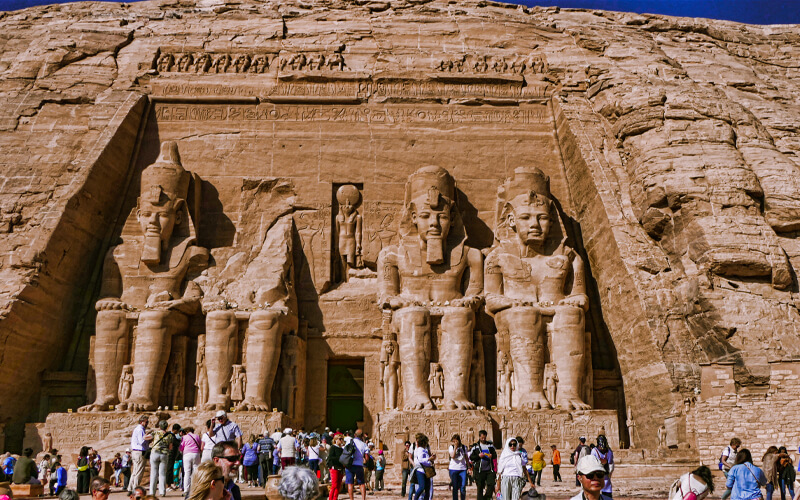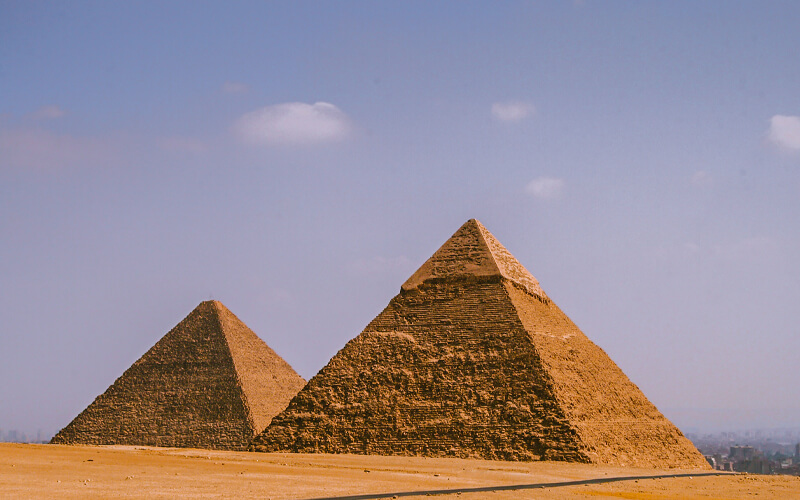Attractions in the Luxor
Attractions in Luxor
At the height of the Ancient Egyptian New Kingdom (1549—1069 BC), its capital, Thebes (Luxor), was a bustling metropolis with a population of over a million inhabitants. During their reigns over this country, the pharaohs amassed vast riches via military victories that extended their reach south into Nubia, west along the Mediterranean, and east into modern-day Syria.
The pharaohs of the New Kingdom were able to undertake large-scale construction projects because of their affluence and the large workforce at their disposal. They did so to immortalize their authority via the structures they left behind. These pharaohs’ attempts to preserve their legacies may still be seen today in the magnificent temple and burial complexes that still exist on each side of the Nile at the site of ancient Thebes, which are still open to the public in Luxor.
Luxor is frequently referred to as the “world’s largest open-air museum” in modern times. This name comes from the fact that the modern city is located on the same site as the ancient city of Thebes, which gave rise to the name. There are still riches from the Old Kingdom being discovered and buried under and around the city, which has practically been constructed on top of and around them.
Luxor Temple and the huge Karnak Temple Complex, both of which are surrounded by contemporary development, are two of Egypt’s most spectacular monuments. The contrast between their old stone architecture and the contemporary development that surrounds them only adds to the overall effect of their presence.
Additional temples and tombs may be found in the surrounding region of Luxor as well as on the opposite side of the Nile River, which is littered with them. It can take several days to explore all of the significant archeological sites within an hour’s drive of Luxor, with each one displaying something unique that will contribute to your understanding of this ancient civilization that blossomed here. If you have the time, you should plan on spending several days exploring these sites.
Madinet Habu (Madinet Habu):
However, even though Medinat Habu is not one of the most visited sites on the West Bank, it is regarded by many tourists to be one of the most magnificent sights they see while in Luxor. This temple complex has been exceptionally well preserved, particularly when compared to the Ramesseum, on which it is based.
Even though it was commissioned by Ramesses II, Medinat Habu, erected by Ramesses III, is a much more stunning sight, with its pylon and many of its walls remaining intact, as well as considerably more of the original artwork evident on its carved surfaces.
In the era of Ramesses III, Medinat Habu served as a walled city, with the temple and administrative center located inside the walls, which served to safeguard the local population during difficult times. Later on, the structure was transformed into a walled town for Coptic Christians who lived in the surrounding region.
Luxor Temple (also known as the Temple of Luxor):
That Luxor has earned the term “The World’s Largest Outdoor Museum” may be best shown by this temple, which may be the most impressive example. Luxor Temple, situated in the contemporary city of Luxor on the site of the ancient Egyptian capital of Thebes, was erected on the foundations of the old Egyptian capital.
Large portions of the building, statues, and relief sculptures are still intact, making it one of the most magnificent places to see in the Luxor region, if not the whole country. In addition to its aesthetic appeal, the juxtaposition provided by its location contributes greatly to it. On one side, the contemporary metropolis starts, while on the other, the Nile floats past in the distance. There are few sites in Egypt where one is brought into direct and immediate contact with the incredible length of Egypt’s history in such a plain and immediate manner.
The Temple of Hatshepsut is a temple dedicated to the goddess Hatshepsut.
Hatshepsut was the only female pharaoh in the history of Ancient Egypt, and she reigned for a short time. Following the deaths of her father, Tuthmose I, and her half-brother and husband, Tuthmose II, who replaced her father on the throne, she rose to prominence during the reign of the New Kingdom period.
She first served as queen-regent to Tuthmose III, her husband’s son by another woman, but she eventually took the throne and managed to maintain control until her death. Hatshepsut is indeed well-known since she is the first and only female to govern Egypt, yet this is not the main reason for her renown.
When it was found in the mid-19th century, the temple was in ruins, having been brutally destroyed by Tuthmose III when he ascended to the throne, possibly because Hatshepsut had prevented him from gaining power in the first place.
In the Valley of the Kings, there is a place called the Valley of the Kings.
Howard Carter’s discovery of Tutankhamun’s tomb in 1922, together with the valuables he had been buried with, marked the beginning of the modern myth of Egypt. The Valley of the Kings is where the modern story of Egypt started. The discovery of Tutankhamun’s riches ushered in a new age of Egyptian tourism, as the treasures of Tutankhamun traveled the globe and sparked a renewed and broad interest in the history of Ancient Egypt as a result of the celebrity associated with the find.
The Valley of the Kings is situated on the west bank of the Nile River, near the city of Luxor, and is a World Heritage Site. It is the most well-known location because of the unique groupings of tombs and the stunning ancient remains that can be seen there. Because of its geographic position, it is one of the most popular destinations for those interested in ancient Egyptian history. Researchers have scoured the Valley of the Kings for decades, and it has never failed to astound them with its rich history and archaeological discoveries.
The Colossi of Memnon are colossal statues that tower above the city of Memnon.
These two colossal monuments, each standing 59 feet tall, are the first thing that greets tourists arriving by boat from the East Bank to the West Bank. During antiquity, they were well-known because of a strange sound that issued from one of them at the stroke of dawn. Since the sound ended years ago, scientists believe that it was created by air moving through pores in the stone as it warmed in the sunshine. However, there is no way to check this theory since the sound stopped centuries ago.
Regardless of its origin, the sound was the inspiration for the sculptures’ name since it led the Greeks to assume that the statues were representations of the eternal Memnon.
Karnak Temple (also known as the Great Temple of Karnak):
Visitors to Karnak are paying a visit to the heart of Egypt during the New Kingdom when they come to this site. This massive temple complex served as the religious heartland of ancient Egypt at a time when authority was centered in Thebes (modern-day Luxor), and its importance is reflected in its massive size. In addition to its religious importance, it functioned as a Treasury, administrative center, and palace for the New Kingdom pharaohs, making it the greatest temple complex ever built anywhere in the world. It is now considered a World Heritage Site.
In 1500 years, it was built up by generation after generation of pharaohs, culminating in an unmatched collection of temples, sanctuaries, pylons, and other ornamentation that can be seen nowhere else in the world.
If you want to spend a fantastic vacation check out our amazing Egypt Vacation packages or Luxor Excursions to find the best way to travel to Egypt for you with Egypt Travel Guide with us in Egypt Nile Cruise



